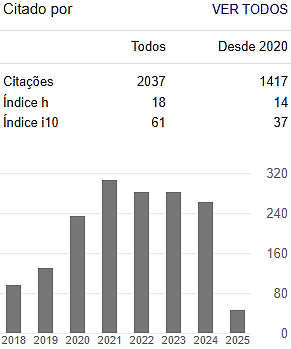ARUGULA PERFORMANCE AT DIFFERENT SALINITY LEVELS AND SHADING CONDITIONS
Keywords:
Eruca sativa, estresse salino, índice de crescimentoAbstract
Arugula is a fast growing vegetative crop and short cycle, of great worldwide acceptance. In Brazil, its production and consumption are prominent in the South, Southeast and Northeast, generating employment and income for family agriculture. The use of saline water in the production of vegetables is one of the main challenges of researchers and rural producers, since saline stress is one of the biggest abiotic problems that causes a decrease in the production and yield of crops. In view of this assertion, the objective was to evaluate the growth of the arugula culture under different levels of saline water. The experiment was conducted in a greenhouse at the Experimental Area of the Agricultural Sciences Center of the Federal University of Alagoas, in the city of Rio Largo, AL. The treatments consisted of shading (T1 = unshaded, T2 = shaded) and five levels of saline water (0.5, 2.0, 3.5, 5, 0 and 6.5 dS m-1) with four replicates. The variety of arugula used was the APRECIATTA Folha Larga. At 12 DAS the thinning was done leaving only one plant per pot. The following growth indices were evaluated: Plant height, number of leaves, leaf area and shoot dry mass. The plants showed a decrease in normal growth up to 2.0 dS m-1 and with the increase in the electrical conductivity of the water caused a reduction in all growth rates, presenting a varied effect according to the type of environment.
Downloads
Downloads
Published
Issue
Section
License
Copyright (c) 2020 Colloquium Agrariae. ISSN: 1809-8215

This work is licensed under a Creative Commons Attribution-NonCommercial-NoDerivatives 4.0 International License.

